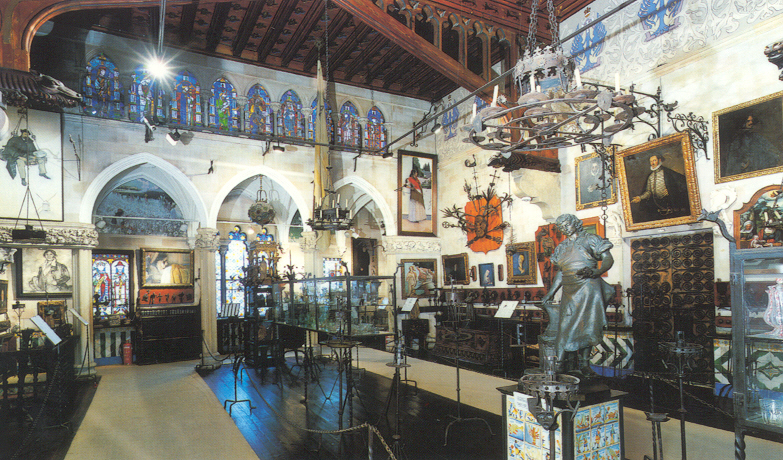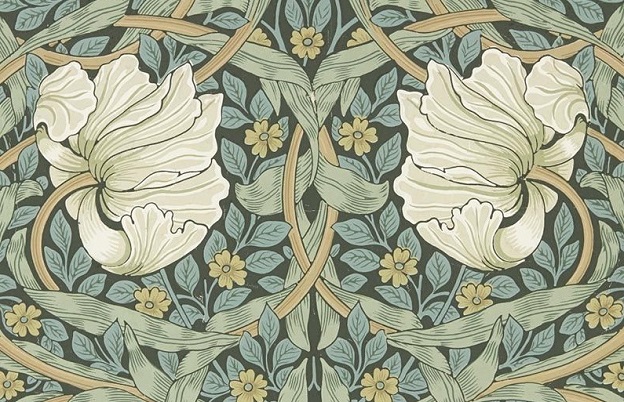There’s a story between Sitges and the rest of Europe. It all started with Santiago Rusiñol, the man that owned the now Museum Cau Ferrat. And who was he?
We need to go back to the times of Rusiñol before that Sitges was another fishing village on the Mediterranean coast before the train arrived in 1881, there was only horse and carriage to travel around no coastal road, forget the motorway. If you needed to go to Barcelona, you needed 12 hours to get there, a very long route. When Rusiñol arrived in Sitges, he did it with the modern train, and the railway was new, modern. We’re talking of the year 1891.
Santiago Rusiñol was a fundamental character of the time. His origins are in a bourgeois family from Barcelona, and his family had a textile mill that he had to take over. He was born an artist and didn’t want to take over that type of business. He wanted to be an artist, and he wanted no rules, he was seeking freedom and wanted to travel, to explore the world.
So when our artist gave over the business to his brother, he began a wealthy path towards self-discovery. After all, the mills were always an asset in the Catalan Industry. The rivers in the Pyrenees helped run the mills that made the textile industry a profitable business. These Mills boomed in the times when Spain was crossing the Atlantic Ocean to find gold in Central and South America.

From then on, he had the privilege to start discovering the world as they knew it. He became part of that European Bohemian subculture from the late 19th Century like Pierre Auguste Renoir, Camille Pissarro, Oscar Wilde, Isadora Duncan, Honoré de Balzac and many many other artists of the time. He joined that lifestyle as a Nouveau Bohemian, a wealthy artist that wanted to experiment with that lifestyle.
In order to be a good collector, now and always, you need to have a generous income, and here it was the case. There was also a need for a place to keep the antique collection, specialized in iron, that it took so long to collect. So that was why Rusiñol bought two fishermen cottages by the sea. In the village, he found by the sea, with the perfect atmosphere mixing light and peace that he wanted so much, away from the dirt of Barcelona.
The world in the late 1890s was small, Rusiñol explored the rugged mountains of Catalunya and discovered, like other explorers of the time, the Pyrenees, where people lived with no communication. He found Romanesque Art and found lots of objects to add to his collection. He travelled around Spain as a journalist for La Vanguardia newspaper and also went to Italy to learn from the classic artists and in time even went as far as Argentina. He reported the life in Paris to the whole of Spain all through the years in Montmartre. And in fact, made French culture very popular in Barcelona.

He started collecting iron as a young child when he began drawing door knockers in his street, where he lived in the Princessa street, close to where we have the Picasso Museum in Barcelona. He became a fond collector of hand made objects, and we’re talking of the period of the Arts and Crafts Movement, which was a reaction against what was for them a step back with the introduction of machinery and factory production, with the dirt, the pollution, the mass and the loss of personality in the objects. Even the Gothic Revival and Medievalism in the architecture is present in our Cau.
Rusiñol also evoked the Pre-Raphaelites in this Temple of the Arts. In the Cau Ferrat, there are some paintings reminiscent of the Pre-raphaelites in the shape of three allegories of the Music, Painting and Poetry that you find in the Great Hall of the Cau Ferrat. The painting of the Poetry went to the Champ de Mars Salon in Paris in 1895, and it has travelled a lot, to tell the truth as many other paintings you can see in the Cau Ferrat.

Paris, 1894
Oil on canvas
Museu del Cau Ferrat, Sitges. Col. Santiago Rusiñol
So with Santiago Rusiñol, you see an artist that had an excellent knowledge of international artistic currents, mainly from his trips to Paris, where he lived there for some time, on and off and it was where it was all going on.
Therefore, we cannot say that in Sitges there’s only beaches and bars. The visit to the museums, situated behind the church at the top of the hill, takes you back to this magic period of art history of the late 19th Century.
Photo Credits
© Photographic Archive of the Consorci del Patrimoni de Sitges
Bibliography
Sala, Teresa-M. “Allegory of Poetry“. in Peça del mes. Sitges: Consorci del Patrimoni de Sitges.
Fontán del Junco, M.; Zozaya Álvarez, M. (2017): William Morris i companyia : el moviment Arts & Crafts a Gran Bretanya. Madrid : Fundación Juan March : Editorial de Arte y Ciencia ; Barcelona : Museu Nacional d’Art de Catalunya. 494 p.
Rusiñol, S. (2017): Desde el Molino [edición facsímil]. Sitges: Consorci del Patrimoni de Sitges : Edicions i Propostes Culturals Andana. 324 p.
Susana Preston, guide and visitors attention for Sitges Museums

Deixa un comentari